Four buildings girdling Dadar East's former tram terminal at Khodadad Circle have seeded iconic shops and eateries
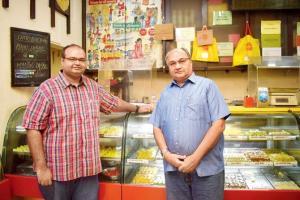
Aaditya Acharya and his father Deepak at their shop D. Damodar Mithaiwala, at Harganga Mahal since 1937. Pic/Ashish Raje
 Everyone has one. A home from the past, the acre an ancestor grew up on. Mine is the city's only unwalled baug, Dadar Parsi Colony, where my parents lived before choosing Bandra's cosmopolitan climes. I have cousins in facing flats on either side of the statue of Mancherji Joshi, my mother's grand-uncle who envisioned this community bastion.
Everyone has one. A home from the past, the acre an ancestor grew up on. Mine is the city's only unwalled baug, Dadar Parsi Colony, where my parents lived before choosing Bandra's cosmopolitan climes. I have cousins in facing flats on either side of the statue of Mancherji Joshi, my mother's grand-uncle who envisioned this community bastion.
ADVERTISEMENT
Created from agricultural land in 1899-1900 under the Dadar-Matunga-Wadala-Sion scheme decongesting plague-afflicted south Bombay, Dadar was considered the first "planned suburb". Bursts of colour and character pound the plump heart of Khodadad Circle, at the colony entrance, also termed Dadar Tram Terminus or Dadar TT. Travel writer Gustasp Irani reveals that the two-storey buildings along this quadrant were erected by his grandfather Gustasp and his brother Rustom. "They requested the municipal commissioner to name the roundabout for their father Khodadad, my great-grandfather."
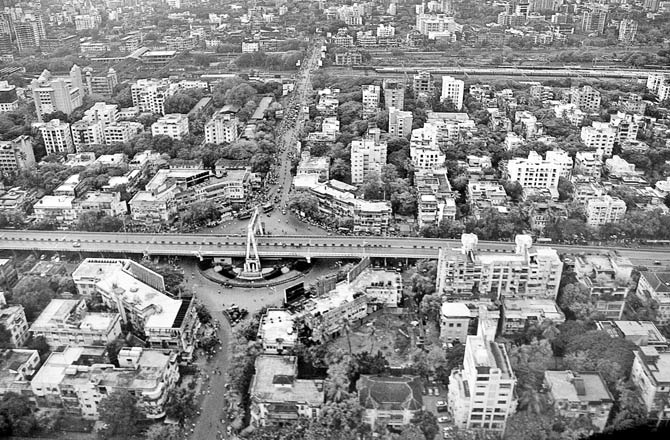
An aerial view of the Khodadad Circle shows the originally two-storey structures ringing it: clockwise from left bottom corner stand Empress Mahal, Empire Mahal, Imperial Mahal and Harganga Mahal. Pic courtesy Jehangir Sorabjee/Above Bombay
Barring a few leafy lanes, Dadar spells chaos, confusion and fusion. I smile as Beethoven meets Burman on an unequal footing — strains of the Eroica symphony from a genteel home are hardly heard above 'Mehbooba O Mehbooba' thumping from a street hawker's radio. The print on his T-shirt describes the crazy train crush not far from this junction: "Haar ke aagey jeet hai, Dadar ke aagey seat hai" (there's victory after defeat, there's a seat after Dadar).
Conservation architect Vikas Dilawari finds Dadar TT display sensitive town planning. "With Indo-Saracenic style chhajjas, multifoil arches and jaali balconies, the four buildings are splayed, respecting the site's circular profile. Their uniform facade is reminiscent of Horniman Circle." Completed by 1934-35, following Sohrabji Bhedwar's design, all but one of the buildings remain colonially christened. Clockwise, as Tilak Bridge ends, stand Empress Mahal, Empire Mahal, Imperial Mahal and Harganga Mahal (formerly Rustom Mahal, for Khodadad's younger son). Ishwar Singh Chowhan tells me the property was renamed Harganga in 1944, passing on to his uncle Harnam Singh and father Ganga Singh.
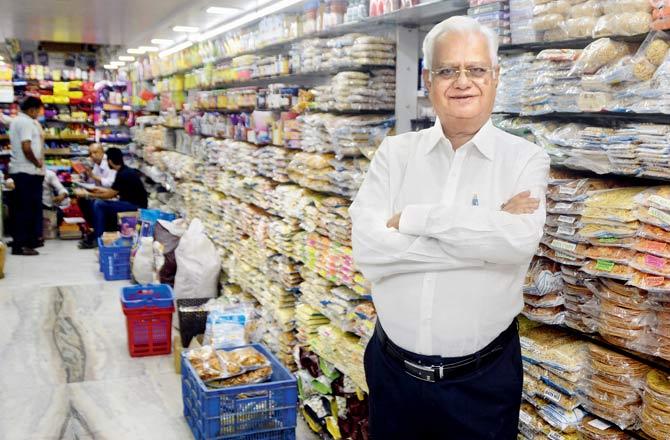
Jayantilal Bhai Gangar takes a break from attending to a rush of customers over Diwali in his ancestral Gangar Stores at Empire Mahal. Pic/Sneha Kharabe
Harganga Mahal had a quirky fixture in dagli-coated, pagri-capped Jehangirji Vajifdar with his black cat at frozen foods specialist Vincent Stores, as well as the institutional legend Agrawal Classes. GD Agrawal reached the city from Ajmer in his teens with R29 from selling his bicycle. Kindness still made him teach math and science to Mazagaon mill mazdoors' kids free of cost. Turned professional on marrying, Agrawal rented a cramped Matunga room the family had to move out of in coaching hours. The class shifted to Harganga Mahal from 1955, its roster including Nadir Godrej, Mukesh Ambani and Mahendra Choksi of Asian Paints.
Below, Dayaram Damodar Mithaiwala (D. Damodar after a family split) was the unofficial canteen for Agru's as students like my IIT-aspirant brother dubbed it. Yellow khaman chutney-laced samosas and bhajias offset any academic angst, pedhas celebrated decent marks. "I'm the third generation at these counters from 1937, my son Aaditya the fourth," says Deepak Acharya. His father Natwarlal Ramdas followed the trade of founding father Dayaram Damodar, encouraged by their successful shops in Grant Road and Chira Bazaar. The more engrossing history, rooted in 1829, is Joshi Budhakaka Mahim Halwawala's.
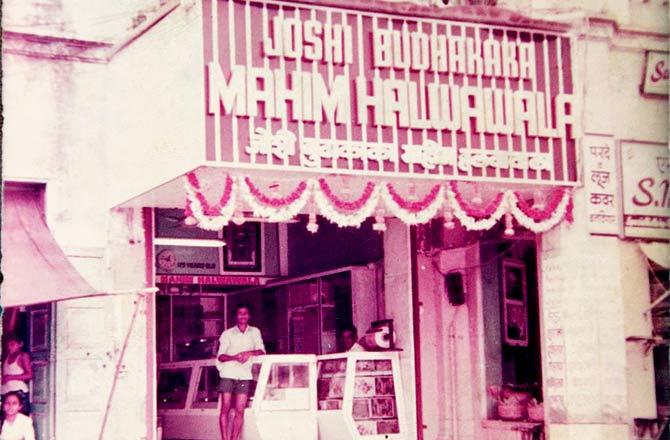
A view of Joshi Budhakaka Mahim Halwawala half a century ago: standing from 1932, the shopfront is crowned by multifoil arches above the jaali-worked balcony, typical elements of the Indo-Saracenic style all four buildings are designed in
The Portuguese ruling Mahim gave a cook they appreciated, Mauji Joshi, a small stall on Kapad Bazaar Road. This branch rose with Empire Mahal in 1932. Six generations down, Kiran Joshi says, "Getting off at the tram stop just outside, people could conveniently walk in to buy our halwa. Dying men have ordered it, craving a last taste!" He brings me an ornate fish-shaped wooden mould contouring the Mawa ni macchhi customers order by the boxful. And a letter in which Nehru wrote: "We have always been pleased with sweets from Dhanji Girdhar."
(Mauji's grandson Dhanji Girdhar was "Joshi Budhakaka no chhokro".) What's with the intriguing mouthful of a name? Mauji Seth was the "budha kaka" delivering door to door laddoos, sev boondi and mohanthal which women of the house hand-rolled in the kitchen. Hitting on the USP formula for butter paper-veiled halwa — pulped wheat, ghee, sugar and saffron sprinkled with dry fruit — explains the "Mahim Halwawala" sign-off. Their 1800s shop was assigned Bombay's fourth telephone number, 04, tailing the trio of digits reserved for police, ambulance and fire emergency services.
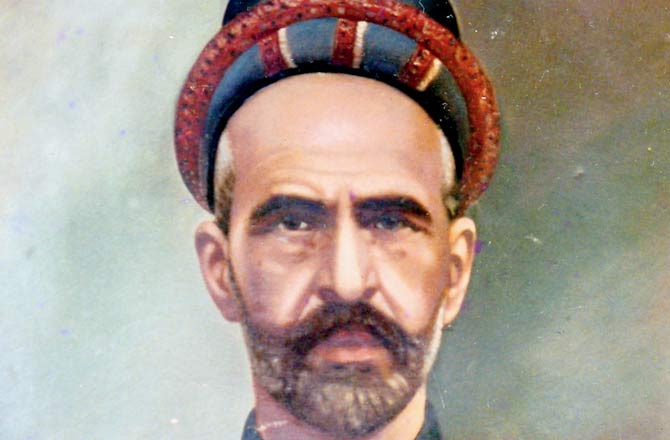
Khodadad Irani, after whom the Dadar TT roundabout was named by his builder sons Gustasp and Rustom. Pic courtesy Gustasp Irani
For 40 years Empire Mahal had Khurshed Bhada's fabric shop, N Khurshed & Company, witnessing such unforgivable fashion fads as the one-wear paper sari. Among old-timers like Shirodkar Opticians, rows of florists and vegetable vendors, Gangar Stores is the 1932 jewel in Empire's crown. Octogenarian Jayantilal Bhai Gangar's father Bhimshi Punshi Gangar hailed from a Kutch village where his forebears coaxed crops from parched soil. He opened Shah Bhimshi Punshi Gangar, the humble ration shop precursor to today's thriving store. "My god-fearing Gandhian father and his Irani landlord were like-minded people," Jayantilal Bhai says. "Polly Umrigar, Farokh Engineer and Salim Durani personally picked provisions from us. Raj Kapoor too, whose films I watched in Broadway Cinema."
The Kapoors being at Five Gardens nearby, Raj Kapoor's circle haunts were widespread, from Derby Haircutting Saloon in Harganga Mahal to A To Z Furnishings in Imperial Mahal where patriarch Prithviraj Kapoor visited his dental surgeon (two local dentists, Dr Minocher Bilpodiwala and Dr Maneck Billimoria, partnered at the Empire Mahal pharmacy Bill & Co, opposite which Bill Nursing Home in Imperial Mahal introduced a 24-hour oxygen cylinder service). Prithviraj's convertible invariably tilted as he heaved his strapping self onto the kerb, recalls Rukhshana Sholapurwala. Her father Firoze received a police medal from Lord Mountbatten for bravery in a 1947 gang assault. He then founded Roc Pharmaceuticals and led civic campaigns, opposing the Jagannath Sunkersett flyover for 30 years till it loomed by 2000.
Another Kapoor gets fond mention from Mani Shah, in Imperial Mahal for 65 years. "Shashi was a gentleman to the core," she says, sharing a prized photo with the star. "Very different from Me Too horrors these days." Her father Kaku Bhai Shah ran Central Store. Distributors for Polson butter and Swastika oil, the grocery saw snaking queues form in years of commodity shortages. She remembers Irani cafes Yazdan, Star Bakery, Aga Snacks and Adi Stores cheerfully corner each building. Besides brun maska dunked in chai, was bread pudding topped by toasted chicory grains called charoli and falooda crusted with sabza, basil seeds.
The grand old man of Imperial Mahal is doubtless 90-year-old Lakhamsi Bhai Shah of Asian Store, originally Kaka Stores. Dropping out of Grade 5 in a Gujarati-medium school to sit at the family shop, 80 years later Lakhamsi Bhai still spryly sorts batteries and double-sided blade packets, as regulars enquire "Kem chho Kaka?" Son Niteen says, "The merchandise mix has changed from grains to cosmetics, stationery, gifts and games. I feel so proud taking forward my legacy."
A similar sense of continuity pervades A To Z Furnishings from 1935 in Imperial Mahal. Maganlal Bhaichand Parekh, from Amreli in Saurashtra, used native tailoring skills to procure partnership with Valia cloth merchants across the road. "His son, my father Vasantrai, began helping at this present showroom as a boy of 9," says Kirti Parekh. "From a pin, to bed and bath linen, to carpets, British patrons and celebrities have trusted our quality." The Parekhs' long-time neighbour, Jyoti Refreshments, often left my poor grandmother wondering why I ditched her homey soft pancakes, called chaapat, for the Udupi's potato bondas and idli fry.
Once an Empress Mahal landmark, Farmer Bros was the result of Nusserwanji Goawalla's ambition. Setting up Byculla Dairy Farm in the early 1900s, he had 1,500 buffaloes behind the Victoria Gardens supply the city milk through both World Wars. His grand-nephew Sohrab Chinoy's father Eruch assumed charge of Nusserwanji's dry stock farm in Sanjan. Tending animals in Nallasopara and stables in Jogeshwari, Eruch's efforts produced the purest cream and topli paneer (cottage cheese in a basket).
"His range, dispersed by an organised grid of bhaiyyas, won clients like the Taj, Radio Club, Cadbury Fry, New Excelsior and Regal theatres," Sohrab says. The Empress Mahal milk bar whipped up thick milkshakes, flavoured lassi and sandwiches with pleasantly piquant mustard. A popular coffee chain now operates within the Farmer Bros premises. Other Empress Mahal shopfronts boring-new, Punjabi Chandu Halwai Karachiwala, here since 1958, offers tantalisingly labelled Tansen Halwa and Kismat Halwa. It was established in 1896 Karachi by Chandulal Bahl who impressed Sri Prakasa, the first High Commissioner to Pakistan, for refusing payment to feed Partition refugees. The Karachi Halwa became Bombay Halwa — brand salute to an urban tadka blending much forgotten goodness and grace.
Author-publisher Meher Marfatia writes monthly on everything that makes her love Mumbai and adore Bombay. You can reach her at mehermarfatia@gmail.com/www.mehermarfatia.com
Catch up on all the latest Crime, National, International and Hatke news here. Also download the new mid-day Android and iOS apps to get latest updates
 Subscribe today by clicking the link and stay updated with the latest news!" Click here!
Subscribe today by clicking the link and stay updated with the latest news!" Click here!






